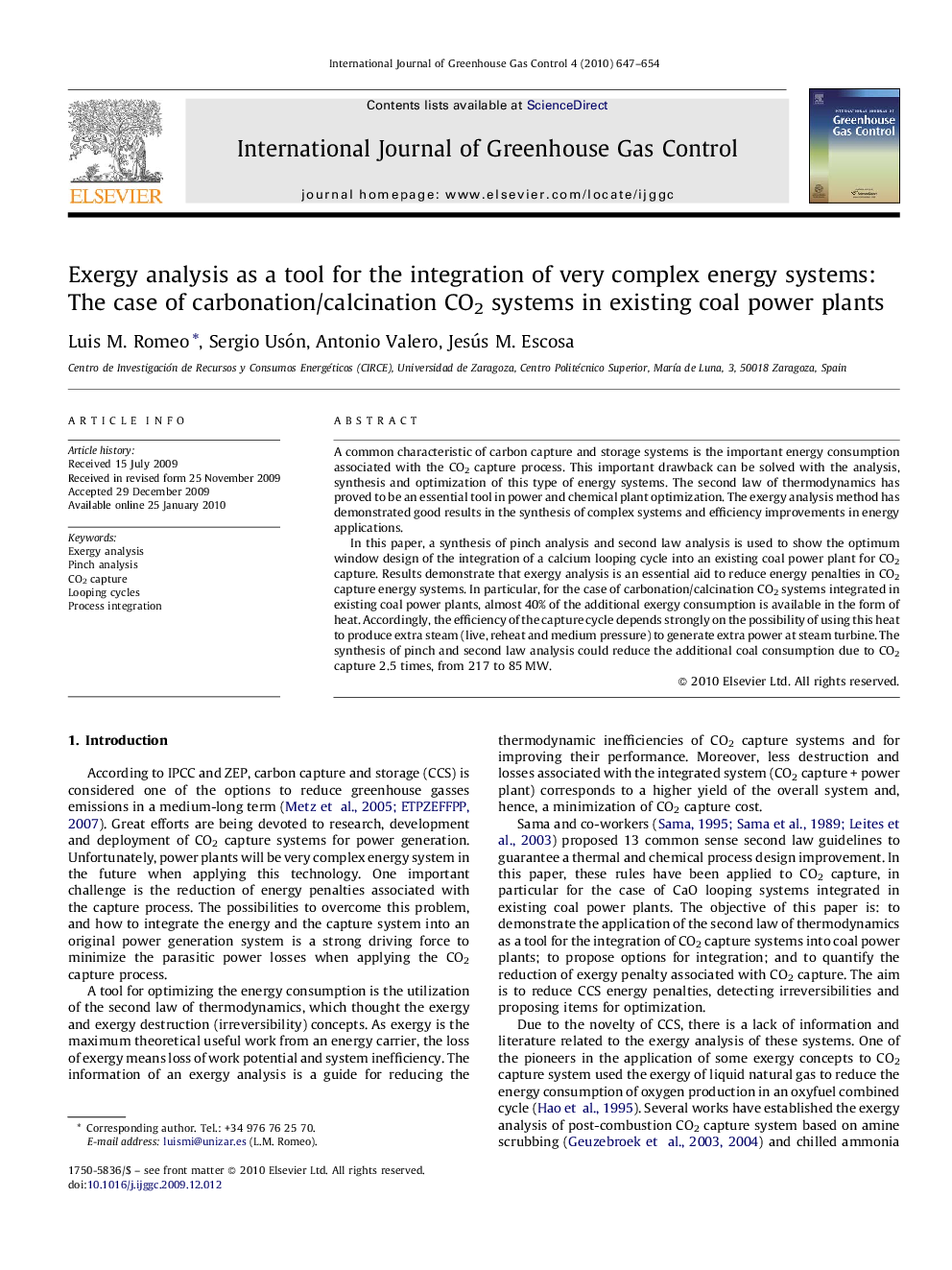| کد مقاله | کد نشریه | سال انتشار | مقاله انگلیسی | نسخه تمام متن |
|---|---|---|---|---|
| 1743460 | 1522027 | 2010 | 8 صفحه PDF | دانلود رایگان |

A common characteristic of carbon capture and storage systems is the important energy consumption associated with the CO2 capture process. This important drawback can be solved with the analysis, synthesis and optimization of this type of energy systems. The second law of thermodynamics has proved to be an essential tool in power and chemical plant optimization. The exergy analysis method has demonstrated good results in the synthesis of complex systems and efficiency improvements in energy applications.In this paper, a synthesis of pinch analysis and second law analysis is used to show the optimum window design of the integration of a calcium looping cycle into an existing coal power plant for CO2 capture. Results demonstrate that exergy analysis is an essential aid to reduce energy penalties in CO2 capture energy systems. In particular, for the case of carbonation/calcination CO2 systems integrated in existing coal power plants, almost 40% of the additional exergy consumption is available in the form of heat. Accordingly, the efficiency of the capture cycle depends strongly on the possibility of using this heat to produce extra steam (live, reheat and medium pressure) to generate extra power at steam turbine. The synthesis of pinch and second law analysis could reduce the additional coal consumption due to CO2 capture 2.5 times, from 217 to 85 MW.
Journal: International Journal of Greenhouse Gas Control - Volume 4, Issue 4, July 2010, Pages 647–654